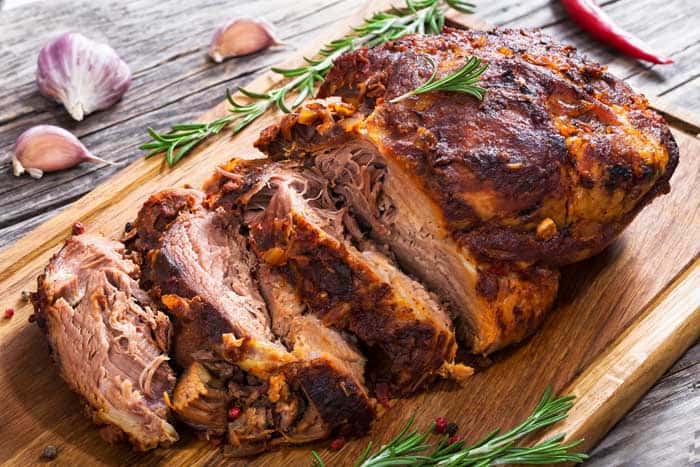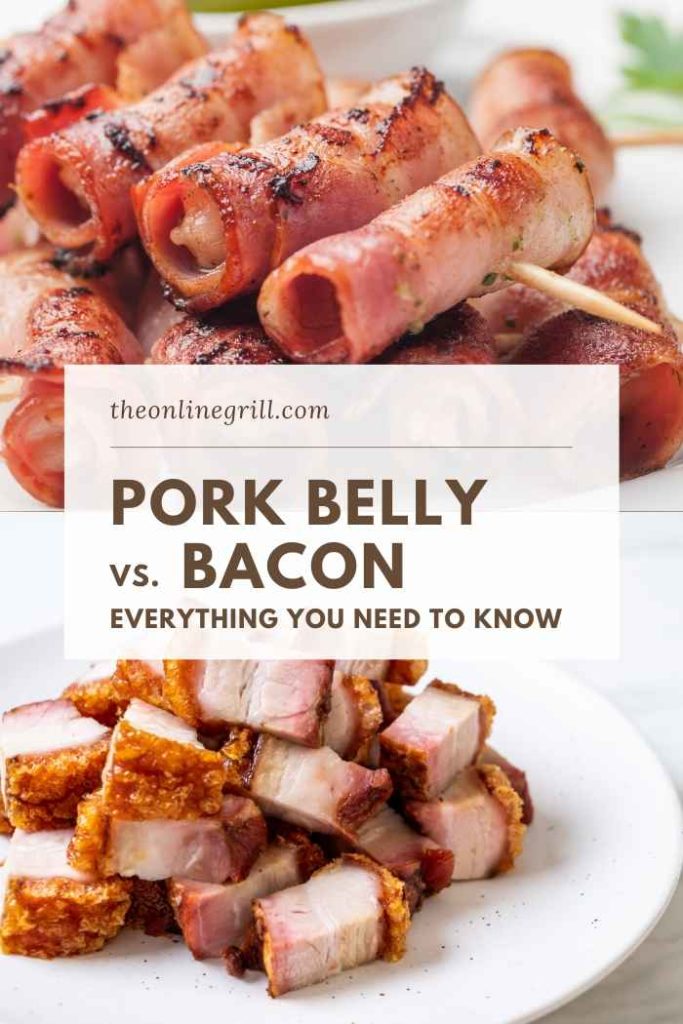Pork cushion is a delicious cut of meat that’s perfect for smoking. We delve into everything you need to know about one of the best pork cuts. Where it comes from on the pig, where to buy it, and the best way to smoke it.

Pork is one of the top meats that people in the world consume, with the exception of some Jewish and Muslim nations. Just like the other animals raised for food, pigs have a wide variety of cuts and meat sources to choose from.
Some of these options are common knowledge, such as bacon, pork chops, and ham. These may be the most well-known, but that doesn’t make them better than the other cuts. One lesser-known cut that doesn’t get its proper dues is the pork cushion.
What is pork cushion?
The pork cushion comes from the picnic shoulder of the pig on the anterior side. It is deboned, and typically triangular in shape and around three pounds once the bones have been removed. You’ll notice a fair amount of connective tissue with an overall low-fat content.
The name pork cushion comes from the fact that the picnic shoulder has plenty of joints and a large bone running through the center, but with a big lean muscle on the side. This big muscle, or cushion, is what gave this particular cut its name.
The low-fat content comes from the amount of work this particular muscle gets. It’s well exercised but is sought after as a lean cut with plenty of flavor. Due to the toughness and connective tissues, it’s best to cook pork cushions low and slow in a roast or smoke.
Pork Cushion vs. Pork Butt (aka Boston Butt)
The pork cushion and the Boston butt often get mixed up because of how close they are to the same location. The two are actually touching on the pig’s foreleg, with the Boston butt being composed of much more fat than the pork cushion.
Each of these cuts can be considered the pork shoulder. Both are similar in size, and both work best when cooked slow and low. It just depends on whether you want a more marble cut (the Boston butt) or a lean one (the pork cushion).
Both of these cuts tend to get absorbed into the generalized term pork shoulder, but they are each distinctive parts of the shoulder. The pig utilized the cushion for lean meat and went easy on the Boston butt, which allowed more fat to accumulate.
Despite the distinct differences between the two, they should both be cooked the exact same way. The slow cooking process tenderizes the meat and brings out the flavor evident in both cuts. Fat content doesn’t affect that process at all.
How to buy pork cushion meat
Not many stores or butchers will sell prepared pork cushion by itself, but a specialized butcher might help you cut it from the shoulder primal cut. There are also high quality providers online who can send you pork shoulder for you to prepare at home.

How to Smoke Pork Cushion

If you already know how to smoke pork butt, the process will be very similar. Make sure to plan your pork cushion dinner in advance because of the long cook time that it will require. This is one of those cuts where patience is key if you really want some mouth-watering meat.
Dry Rub
The pork cushion is going to give you a great base to work off of, but the dry rub is where a lot of the flavor is coming from. You’ll have to combine all of these ingredients together before rubbing the mixture on the pork cushion.
The ingredients are:
- 2 tablespoons each of kosher salt and black pepper
- 2 tablespoons each of granulated sugar and onion powder
- 3 tablespoons each of garlic powder and paprika
- 1 tablespoon of ground sage
- 2 teaspoons of dried oregano
- 1 teaspoon each of dry mustard and cayenne pepper
This will create a tasty dry rub that will mesh well with the lean, flavorful meat. After you’ve got the rub coating the pork cushion, cover the meat in plastic wrap and leave it in the fridge between 8 and 24 hours.
If you would like something with slightly more kick, try our favorite pork dry rub with chili powder.
Smoke the Pork
Finally, the best step of the process besides actually eating the food. Just remember to take your time and don’t rush the process, or the lean meat will seem more like chewing a shoe.
- Rest the pork for about an hour before you begin smoking it. Fully unwrap the pork and let it rest at room temperature.
- Heat the smoker to 225 degrees. It may take a little trial and error to get to this point, but you don’t want to go too much higher or lower if you want the pork cushion to cook properly.
- Place the meat once you’re consistently at 225 degrees. Be sure to place it fatty side up (not that there’s much fat on the cushion) and get ready to begin cooking.
- Cook for 1.5 hours per pound of meat. This is a rough estimate, but depending on the size of your cut, this can take anywhere from 5 to 14 hours. The internal temperature should be between 185 degrees and 195 degrees.
- Let it rest for about 30 minutes after it’s finished cooking. It may look and smell delicious, but the smoked pork cushion needs time before you go digging into it.
- Enjoy the fruits of your labor. However you want to use the meat, now is the time to dive into it.
Other Best Ways to Enjoy Pork Cushion
While the end result is up to you, there are several tried and true pork cushion recipes that you’re sure to enjoy. Some require different cooking methods, while others just differ in what you do to the meat once it’s done.
Roast
Similar to roast beef, a pork cushion can be cooked into a roast with far less prep time than smoking it. You’ll still be cooking it low and slow, but it won’t take as long due to a somewhat higher temperature that you’ll be using.
There are several recipes out there for specific flavors you may be going for. The good news is that this doesn’t change how you cook your cut of pork cushion meat, regardless of what you choose.
You’ll still want to cook by the pound, but this time shoot for around 40 minutes per pound. The internal temperature should be at 145 degrees if you want the perfect roast. After that, it’s just a matter of slicing and serving.
Chops
Slicing up the pork cushion can allow you to pan fry some chops, but you’ll have to do a bit of tenderizing first. The connective tissue and bits of fat won’t break down when cooked quickly, so you’ll have to smash the meat into thin chops if you want it to cook well.
Marinating is another option but adds a lot more prep time to what is supposed to be a quick chop recipe. Going with this option will still leave you with flavorful meat, but it might be a bit on the chewy side.

Pulled Pork
Turning your pork cushion into pulled pork isn’t quite as simple as just shredding it after a roast, but the process isn’t complicated either.
The meat needs to be incredibly tender first, so whether you decide to smoke it or roast it, it is entirely up to you. Once it’s thoroughly cooked and tender, shred the cushion with forks until you have a nice collection of shredded meat.
Your flavorings are up to you, but barbecue sauce of some sort is a must. Once all of the meat is shredded, gently toss it in the barbecue until the meat has a nice coating. Now you can use the pulled pork for tacos, sandwiches, or anything else!
Stew
Do you hate being wasteful? Making a stew with any leftover meat is a great way to get the most out of your cut and making another delicious dish. Whether you decided to smoke or roast for your original dish, just begin cubing the leftovers if you want to, then make a stew.
It’s as simple as adding vegetables and broth to a slow cooker along with your leftover meat. Just let the mixture simmer for a while, and eventually, your meat scraps will turn into a delicious stew. It saves you from being wasteful and doesn’t require an extra trip to the butcher.
Carnitas
Pork carnitas will taste great if you make them from the pork cushion, but you’ll need to turn it into pulled pork first. The only difference is that you’ll be completely skipping the barbecue step. Instead, you’ll want to pull out a pan and begin to crisp up the shredded pork.
Add the meat to some small flour tacos, and then it’s time to add the toppings. Onion, cilantro, and salsa are all must-haves, but you can also add some other good ingredients like avocado or sour cream. Crema Fresca is also a good alternative to sour cream.
Final verdict
It’s easy to overlook the pork cushion, but it’s actually one of the more versatile cuts of meat you can get from a pig. The Boston butt may be fattier, but the pork cushion has enough flavor to make it well worth choosing instead.
Smoking the pork cushion is usually the best method to go with, but roasting is a good alternative as well. You can turn the end result into a stew, shred it into pulled pork for sandwiches, or prepare to make some delicious pork carnitas.









